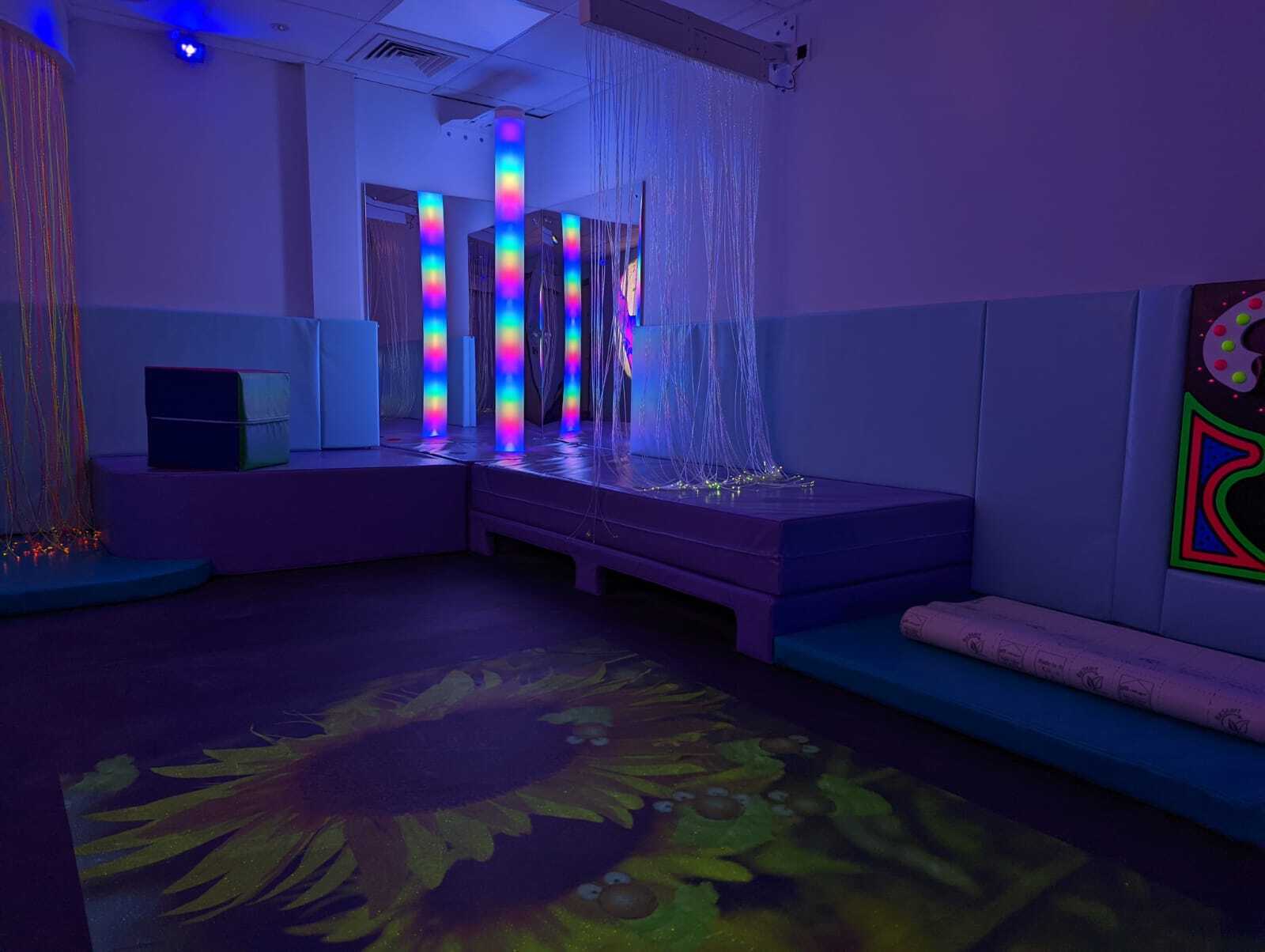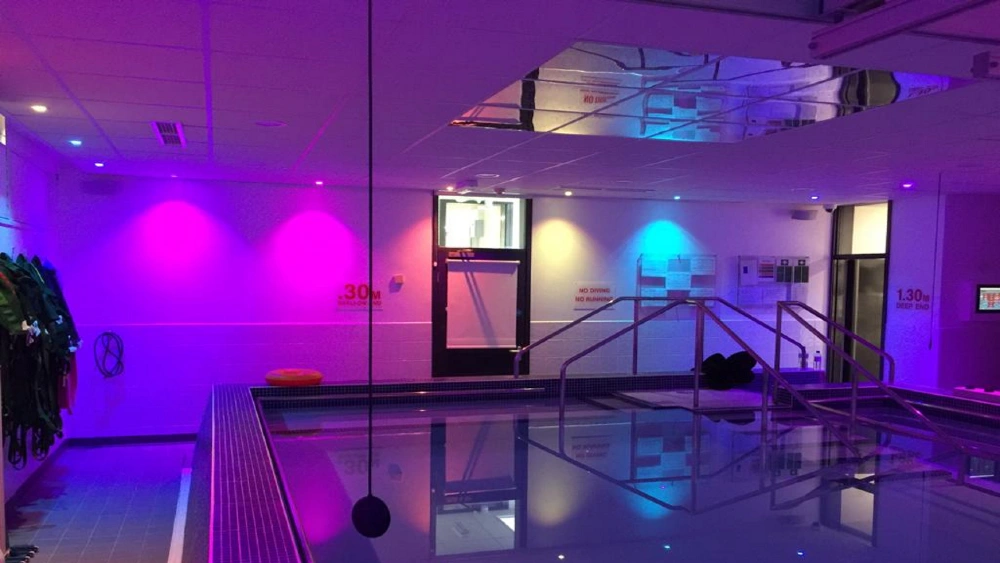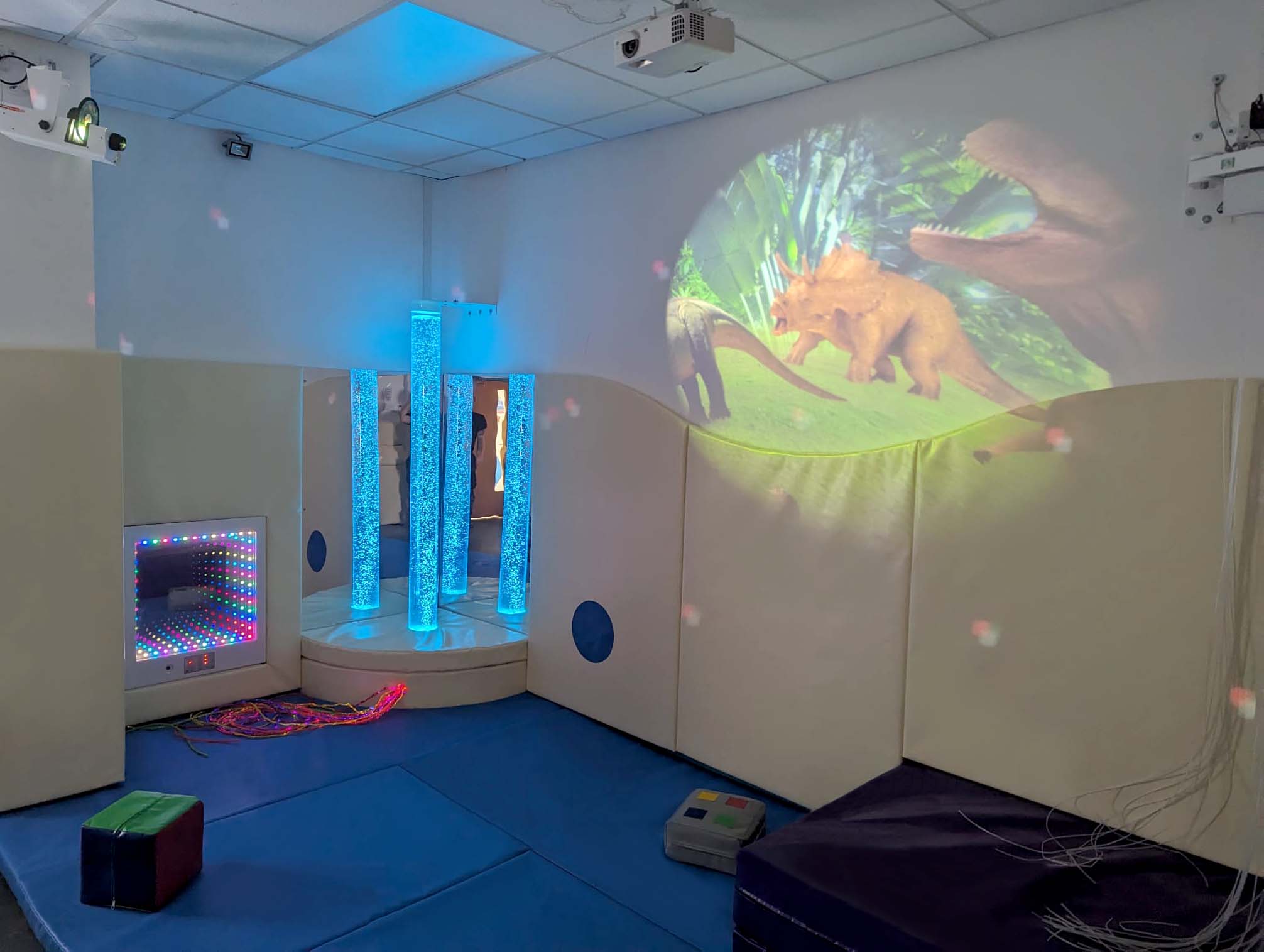Sensory room design is evolving faster than ever and we are always looking ahead to ensure our designs meet the needs and preferences of our clients. This year, we’re seeing key trends shaping the future of sensory design, from cutting-edge technology to a greater focus on customisation. Here’s what’s making an impact right now!
The Growth of Sensory Circuits
Sensory circuits use structured movement activities designed to help individuals achieve an optimal level of alertness, improving focus and engagement. These circuits are grounded in the principles of sensory integration and sensory processing, helping individuals respond appropriately to different stimuli in their environment.
When sensory information is not processed effectively, challenges such as overstimulation, difficulty concentrating, and sensory overload can arise. Sensory circuits provide an effective way to manage these challenges, particularly for children who may struggle to self-regulate throughout the day.
A well-designed sensory circuit typically lasts between 10 to 20 minutes and can be used at the start of the day or after lunch to either energise or settle students. Research has shown that structuring the activities in a specific order maximises their effectiveness.
The sensory circuit consists of three key sections:
- Alerting Activities: These activities help wake up the body and mind, preparing individuals for learning. Fast-paced movements, dynamic stepping paths, and quick-response interactive panels help create a sense of readiness and engagement.
- Organising Activities: This stage helps improve coordination and focus. Tasks such as following structured movement sequences or engaging with responsive balance boards encourage concentration while maintaining a regulated state.
- Calming Activities: The final phase focuses on relaxation and emotional regulation, using gentle movements, deep pressure activities, and soothing lighting to help individuals feel grounded and settled.
Following this structured approach ensures a balanced level of sensory regulation, preventing overstimulation or irritability. If the sequence is not properly structured, individuals may experience dysregulation, making it harder to focus or transition smoothly into the next part of their day.
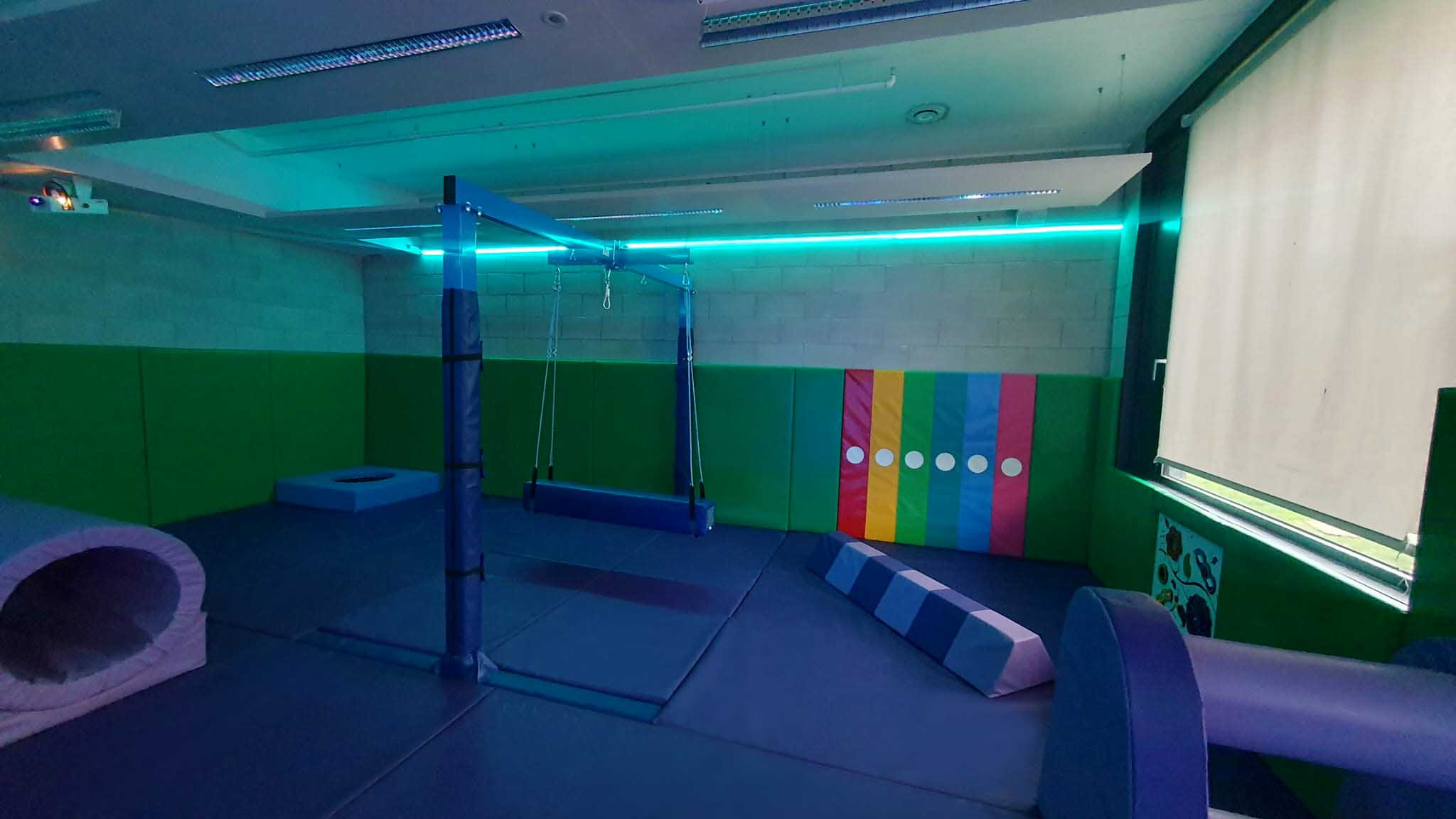
Sensory Room Colour Selection
Did you know colour is one of the most powerful elements of sensory room design? It influences emotional responses, engagement, and relaxation. Rather than focusing on aesthetics alone, colour in sensory rooms plays a functional role in supporting well-being, emotional regulation, and sensory stimulation on an unconscious level.
We’re always looking to introduce updated colour selections, expanding our range to include softer pastel tones alongside our existing vibrant shades over recent years. These additions provide greater flexibility when designing sensory spaces, ensuring that every environment is tailored to the intended purpose and the specific needs of its users.
Research into colour therapy has shown that different shades can have a significant impact on mood and behaviour. Blues are often used to create a sense of calm, making them perfect for calming sensory rooms. Warmer colours such as yellows and oranges promote energy, engagement, and focus, making them well-suited for sensory rooms used by multiple people per day.
We offer expert recommendations on colour selection based on our experience in sensory design, and believe that every space should be tailored to you!
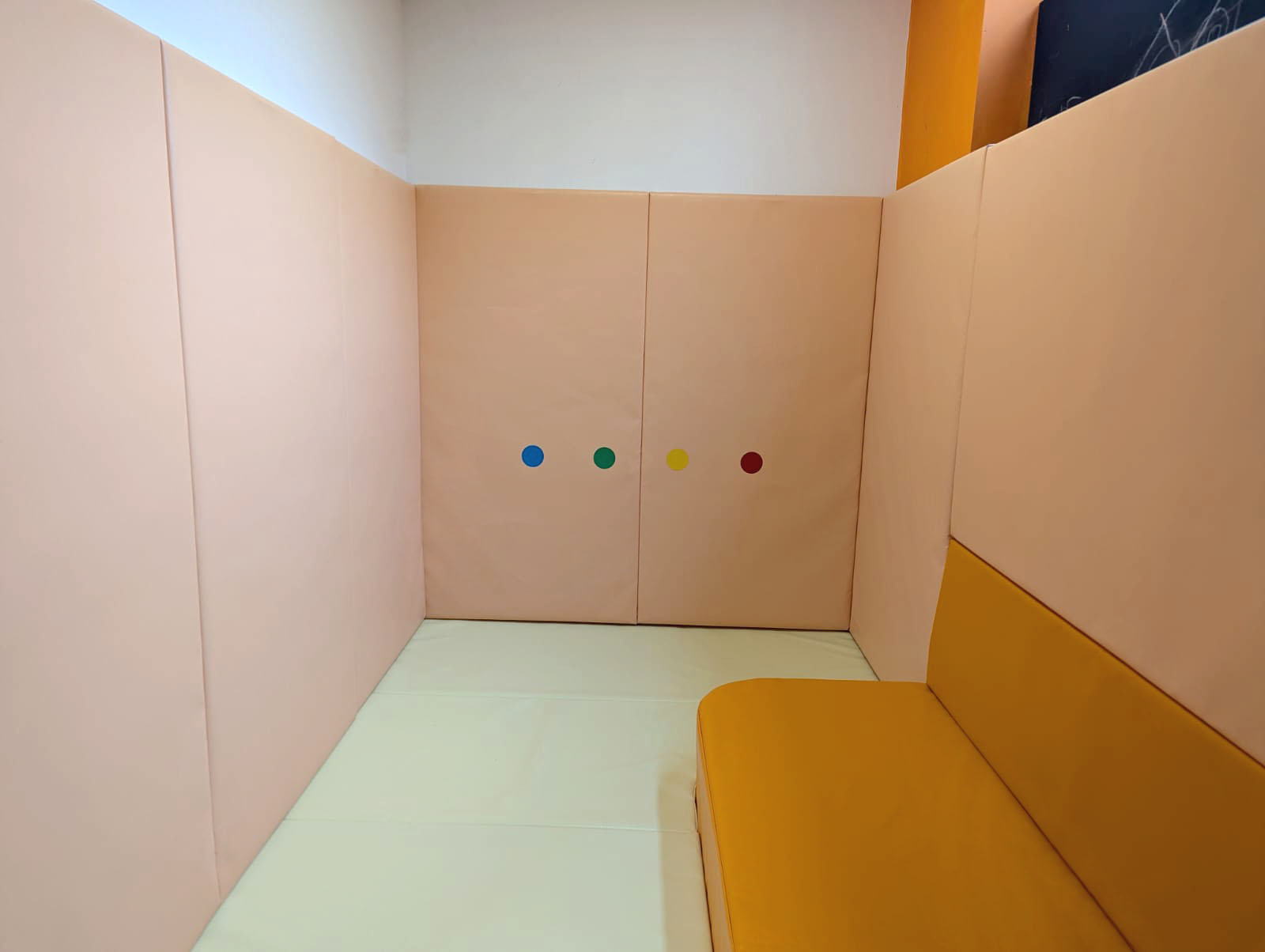
Innovative Interactive Sensory Equipment
Advancements in interactive technology continue to redefine sensory room capabilities, bringing new and exciting interactive features into play. One of our most exciting elements is the Snowstorm Tube, a perfect waterless alternative to traditional bubble tubes. The base of the tube is fitted with LED technology that slowly scrolls through a wonderful range of vibrant colours. Fans fitted in the base of the tube will circulate small polystyrene balls throughout the tube, creating a mesmerising effect!
Another standout innovation is our Hallucination Projector, designed to create an ever-changing visual display that transforms the entire sensory space. The unit has the ability to react to sound, enabling the users to interact with the equipment in a variety of ways. The projector has an LED light source to ensure low energy consumption, and has very little maintenance as the lamp will never need to be changed!
Tactile stimulation remains a key part of sensory room design, and our Interactive Cog Motion Panels take hands-on engagement to the next level. These panels encourage exploration through movement, coordination, and problem-solving, providing a unique sensory experience that is both stimulating and therapeutic.
Key Features of Our Interactive Sensory Rooms:
- Snowstorm Tube: A water-free alternative to traditional bubble tubes, offering immersive visual effects without ongoing maintenance.
- Hallucination Projector: Customisable visual displays that enhance relaxation and engagement.
- Interactive Cog Motion Panels: A tactile feature that promotes movement and problem-solving while stimulating the senses.
For a closer look at our interactive sensory panels and motion-based features, we recommend exploring our latest product range.
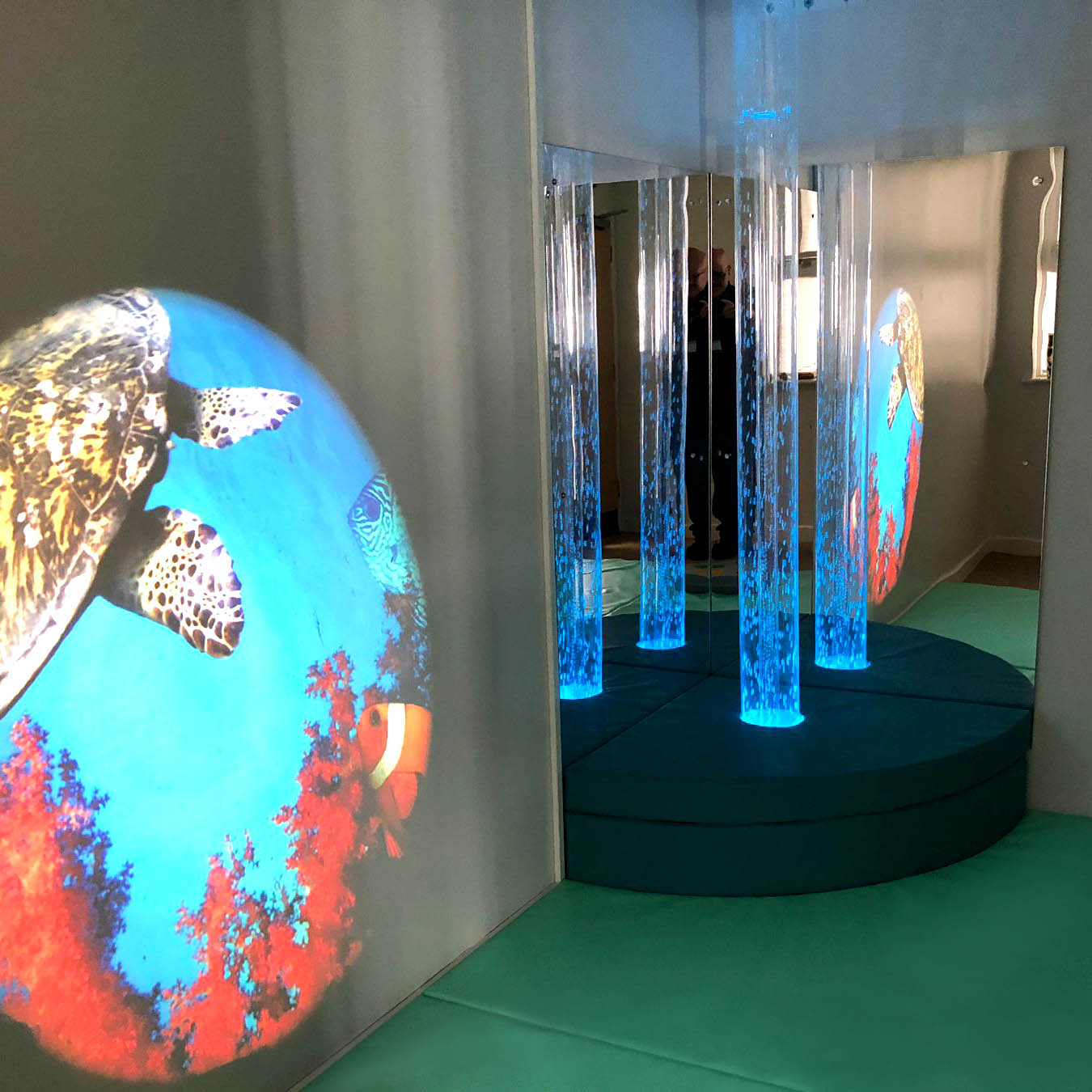
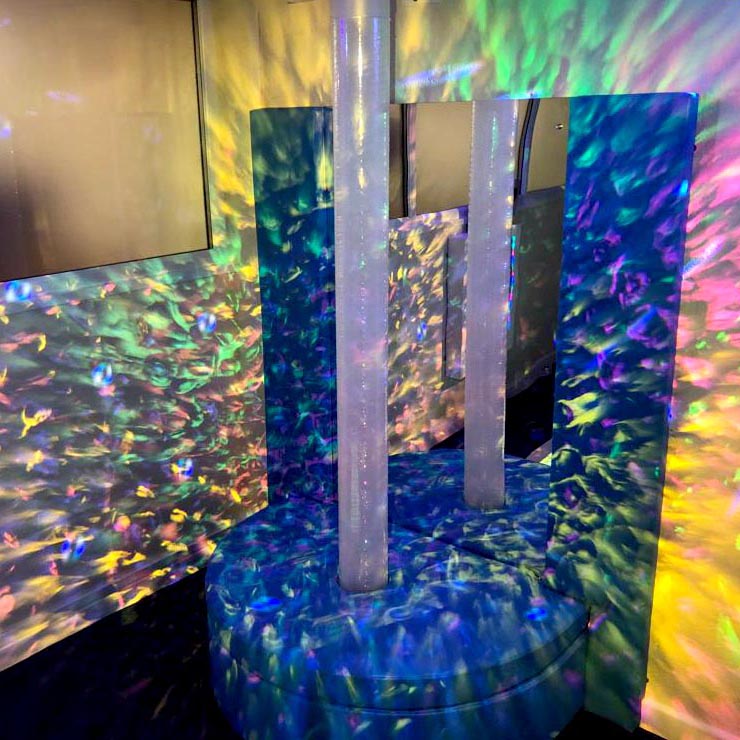
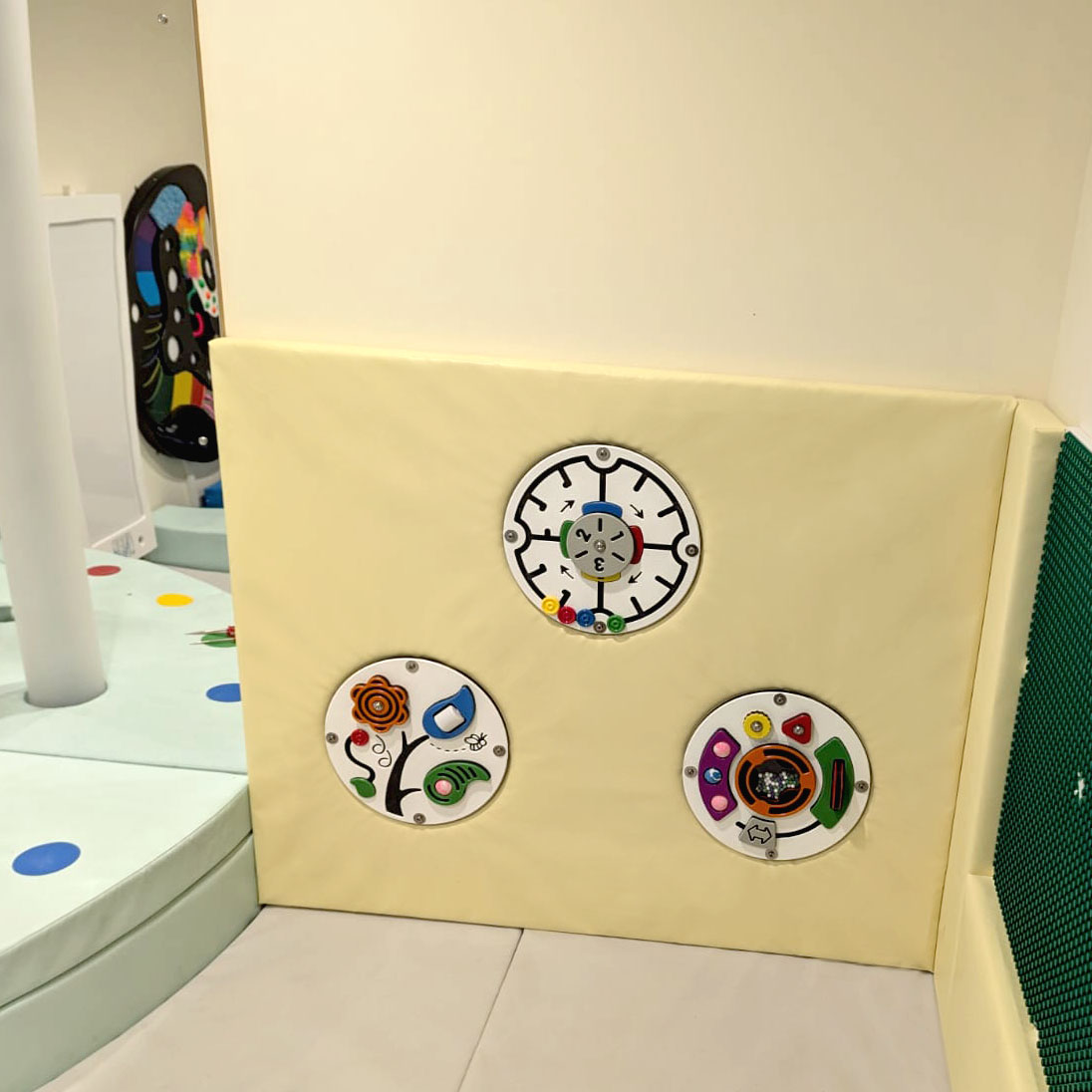
Final Thoughts
As we move further into 2025, we continue to stay at the forefront of these innovations, ensuring that our sensory spaces continue to provide meaningful and engaging experiences for users of all ages and abilities.
Whether you’re looking to incorporate sensory circuits, explore new colour combinations, or integrate cutting-edge interactive technology, we can help you bring your vision to life. Get in touch with us today to learn more about how we can create a bespoke sensory environment tailored to your needs!

